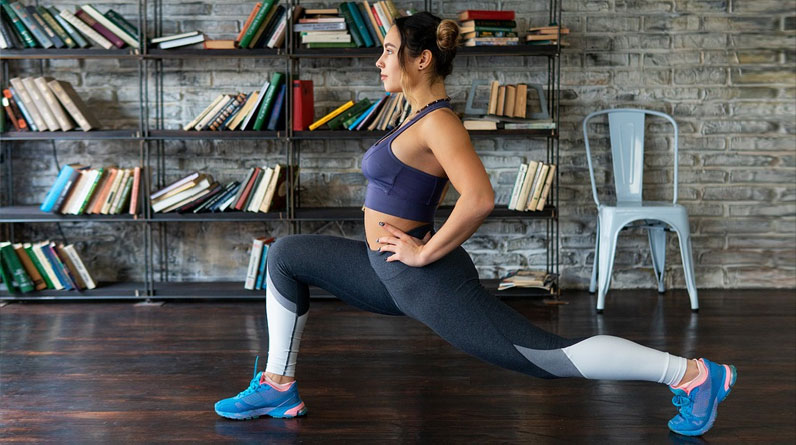
The Importance of Warm-Ups Before Your Workouts
The benefits of a warm-up are well documented, but how many of us actually take the time to do one before our workouts? Not enough.
The majority of us probably shoot straight into our main workout, which is a mistake. Warming up properly can help prevent injury and also optimize performance in your training session to follow.
As we get older, the risk of injury increases, especially as an acute consequence of sports activities like weight lifting, CrossFit, and other high-intensity interval training exercises that push our bodies to the limit so frequently.
If you’re reading this as someone who works out regularly or even as a personal trainer yourself, it doesn’t mean that you should neglect warming up. Everyone needs to pay attention and modify their habits accordingly.
Why Should I Warm Up Before a Workout?
Before you begin any intense workout, such as a HIIT, CrossFit, or weight lifting session, you should always warm up. This helps increase your heart rate, moves blood around your body, and prepares your body for the workout ahead. It also increases your core temperature, which can help to prevent injury.
A warm-up is essential before any cardio or strength training session. It increases your core temperature, improves your heart rate, and prepares your muscles for the workout ahead. Warming up will help prevent injury, increase your overall performance during your workout, and allow you to train harder and longer.
The Importance of Warming up Before Exercise
The main benefits of warming up before your workout include increased blood flow and heart rate, increased core temperature, and increased joint and muscle range of motion. All of these factors are important for safe and effective exercise.
- Blood flow and heart rate – The primary benefit of warming up is that it increases blood flow to the muscles being worked out. Increased blood flow allows for more oxygen and nutrients to be delivered to your muscles. This is especially important for high-intensity training, as the muscles need more energy to work harder. Increased blood flow will help prevent muscle fatigue, allowing you to work out longer and more effectively.
- Core temperature – Warming up also increases your core temperature. This is important because your muscles are more flexible when they are warm. This can help prevent injury, as increased flexibility in your muscles and joints allows you to move and stretch out more easily.
- Joint and muscle range of motion – Warming up also increases joint and muscle range of motion. This is important because it allows you to move with more ease and less strain. If your muscles are warm and they don’t have to work as hard to stretch out and move, they won’t be as prone to injuries like strains and sprains.
How to Properly Warm Up for Your Workout
A good warm-up should last around 15-20 minutes. Most experts recommend spending 10 minutes warming up your heart and lungs, followed by a short 5-minute stretching session.
Aerobic exercise, such as jogging, walking, or cycling on a stationary bike, can be useful for warming up your heart and lungs. A warm-up can be broken down into three phases:
- The first phase is to increase your heart rate and blood flow by doing some moderate cardio. You want to raise your heart rate to above 50-60% of your maximum heart rate, so try jogging on the spot for about 2-3 minutes.
- The second phase is to stretch. You’ll want to hold your stretches for around 30 seconds. Focus on your lower body, as this will help to prevent injury.
- Finally, you want to end your warm-up with a few minutes of strength and mobility exercises. These will help to strengthen your muscles and joints, prepare your body and help you to avoid injury.
Core Exercises During Warm-Up
This exercise is done by lying on your back, placing your hands on your abdomen, and slowly contracting and relaxing your abdominal muscles for around 10 seconds, followed by 10 seconds of rest.
This exercise is done to activate your core muscles and helps to prevent lower back pain and injury and improves your balance.
Wall squats are done by standing in front of a wall with your heels about two feet away from the wall. Then, slowly squat down while keeping your back and hips parallel to the ground until your thighs are parallel to the floor. Make sure to keep your knees facing straight ahead and avoid letting them go outwards while doing this exercise. Stand back up and repeat this exercise 3-5 times.
Stretching exercises should be performed after a warm-up. This will help increase your joint and muscle range of motion and prevent injury. Some good stretches include toe touches, hamstring and calf stretches, a seated twist and hip flexor stretches, and a neck rotations.
Dynamic Stretching Exercises During Warm-Up
Dynamic stretching exercises can be added to your warm-up routine. This type of stretching is a type of active stretching done before exercise.
It’s done at a slow pace to increase blood flow and to get the muscles warmed up. An example of a dynamic stretching exercise that can be added to your warm-up routine is a walking lunge. It can be done while standing in place or while walking around. There are many other dynamic stretching exercises that can be added to your warm-up routine. Some other examples include arm circles, shoulder shrugs, and leg swings.
Conclusion
Warming up before exercise is essential for preventing injury and increasing performance. The benefits of warming up before exercise include increased blood flow and heart rate, increased core temperature, and increased joint and muscle range of motion. A proper warm-up routine takes around 15-20 minutes. It can be broken down into three stages: aerobic exercise, stretching and strengthening, and mobility exercises. A proper warm-up before exercise can help prevent injury and allow you to train harder and longer.
